
Weekly Markets
Why Weekly Markets?
Streets of Delhi deemed as one of the dominant public spaces are not just used for transport and mobility but are significant places of work serving up to 500,000 street vendors. We began mapping ‘markets’ in Delhi largely from the lens of spatiality, and along with it came the classification of markets into degrees of publicness, informality, flexibility and local logic. Through this exploration, a myriad of intersections and stakeholders were observed, however, the sheer quantity and interdependency of informal livelihoods and street vendors with public spaces became central to our scope of work.
Weekly markets (also known as hafta bazaars) are the visible yet invisible pockets of Delhi’s urban landscape, which not only add vibrancy to the streets but also contribute to the local urban economy, greatly.
One of the many consequences of the pandemic was a complete collapse of the urban local economy- from broken supply chains to a lack of demand and a loss of a place to sell. Therefore, the onset of the multiple lockdowns resulted in a disjunct in the local ecosystem, endangering the lives and livelihoods of several street vendors. Thus, began our inquiry into demonstrating global post-pandemic strategies that aimed at re-opening and subsequently reviving weekly markets across Delhi. This is a collaborative initiative of a dynamic network of partner organisations, as part of the MainBhiDilli Campaign.
Objectives
To facilitate re-opening and support up-gradation of weekly markets across in Delhi through participatory planning and design
To collaborate with local urban bodies to access and transform weekly markets into global best practices in vending through integrating post-pandemic strategies
Left: Google Earth image of the 3 locations of Weekly Markets in Delhi
Mahilla Bazaar
Zakir Hussain Marg near New Delhi Railway Station (North and New Delhi Zone)
200 female vendors travelling from Sunder Nagar, Raghubir Nagar and Geeta Colony have been setting up shop on the assigned spot since 2009 with the assistance of SEWA and the NDMC. Due to Covid-19, mobility from their homes to the Sunday market has been nothing but challenging. With barely any consumers out on the streets, their weekly business has taken a hard hit for the past 8 months. These female vendors feel defeated, given the drastic shortfall of demand.
Left: Site Map of Mahilla Bazaar

Prototyping a canopy and hand sanitizer station made up of PVC and tarpaulin used for protection from sun and rain

Visual signages sprayed at strategic meeting points, subject to permissions and visible to all

Covid-19 health and safety capacity-building for vendors and poster feedback

Prototyping low-cost demarcation between vendors with garden mesh, bamboo sticks and jute ropes

Vendors taking the onus to place social distancing posters every week along with their stall

Free masks being distributed by Sewa Bharat
Mangal Bazaar
Dilshad Garden (East Delhi Zone)
The Mangal Bazaar (Tuesday market) site in Dilshad Garden has allowed vendors to sell on a rotational basis to follow safety norms and social distancing as much as possible. There was a time when this weekly market was prohibited to set up shop due to the market site being within 500m of a containment zone. Given the circumstances, there has been a loss of livelihood and regular source of income of 705 weekly street vendors due to the Covid-19 pandemic.
Left: Hand-drawn map of Mangal Bazaar approved by the EDMC and shared by Hawker’s Joint Action Committee
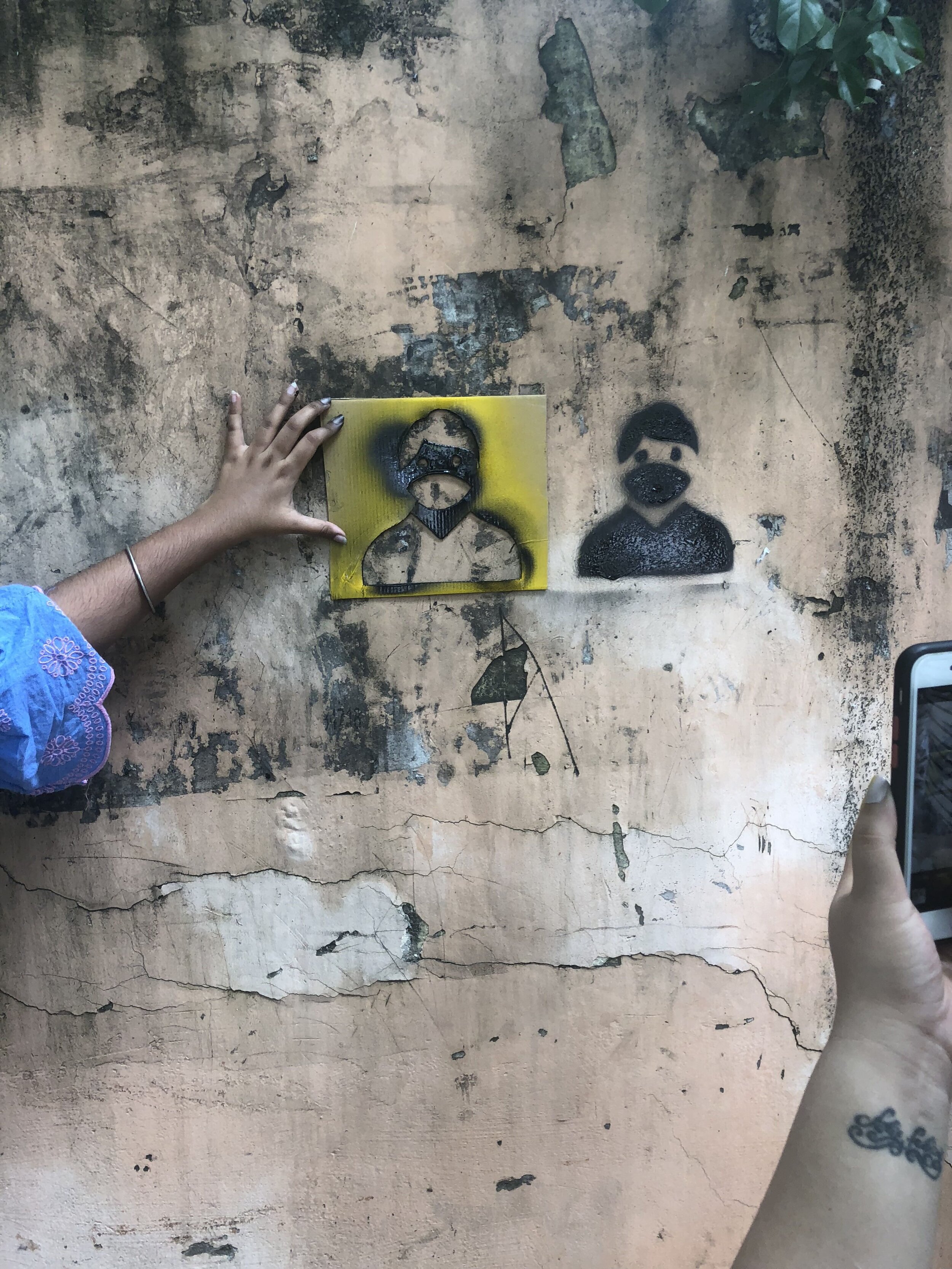
Prototyping street signages that encourage the wearing of masks
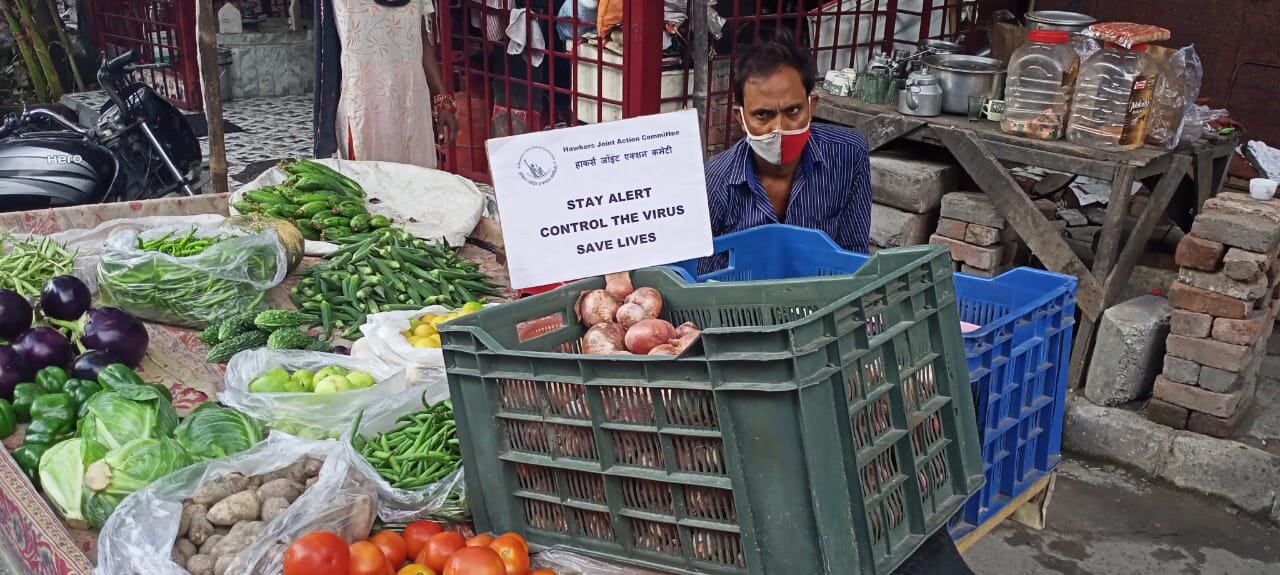
HawkersJAC inserting awareness-building placards at every stall during re-opening of weekly markets
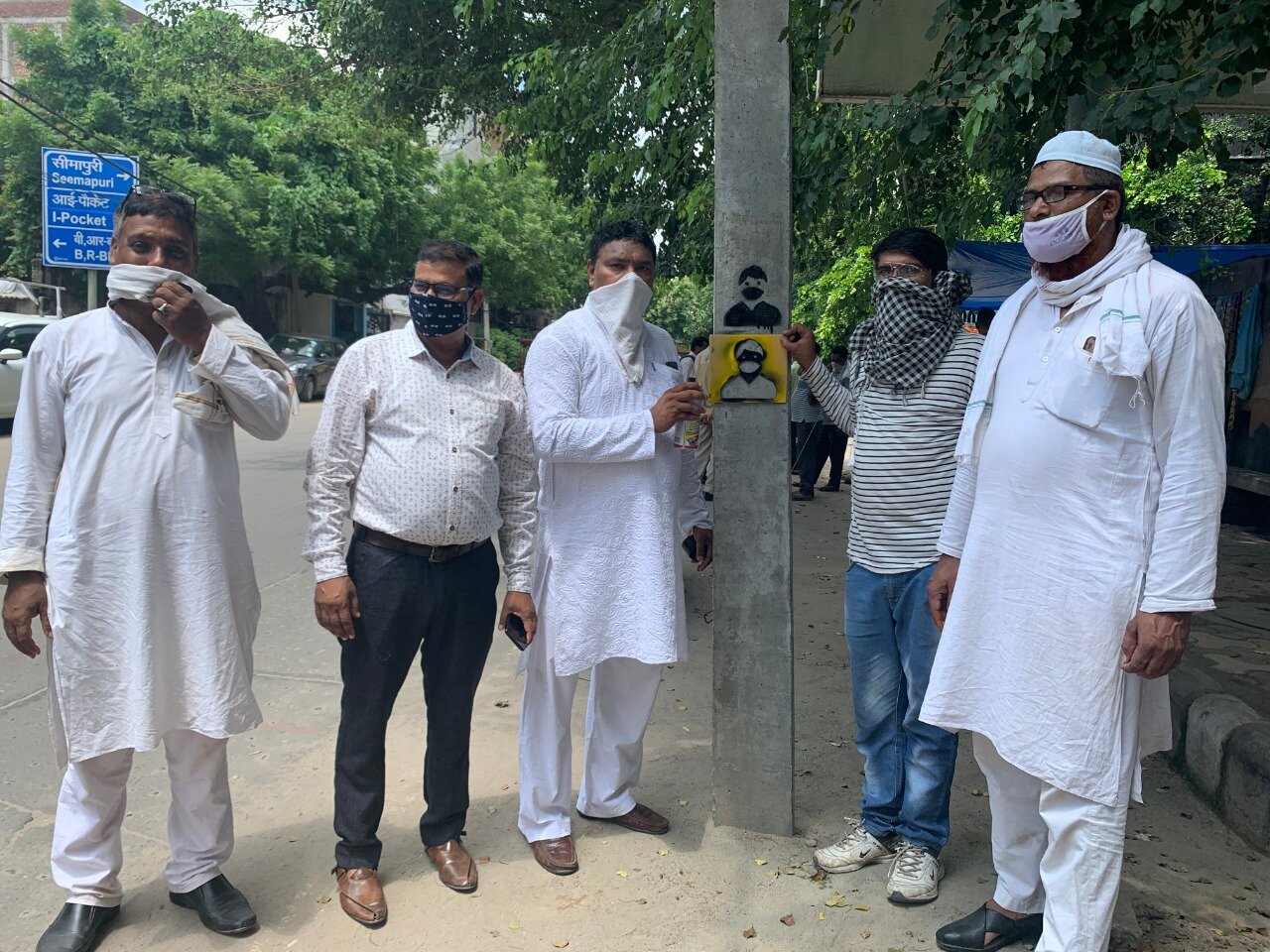
Demonstrating the ease and power of street signages for campaigns on Covid-19 safety
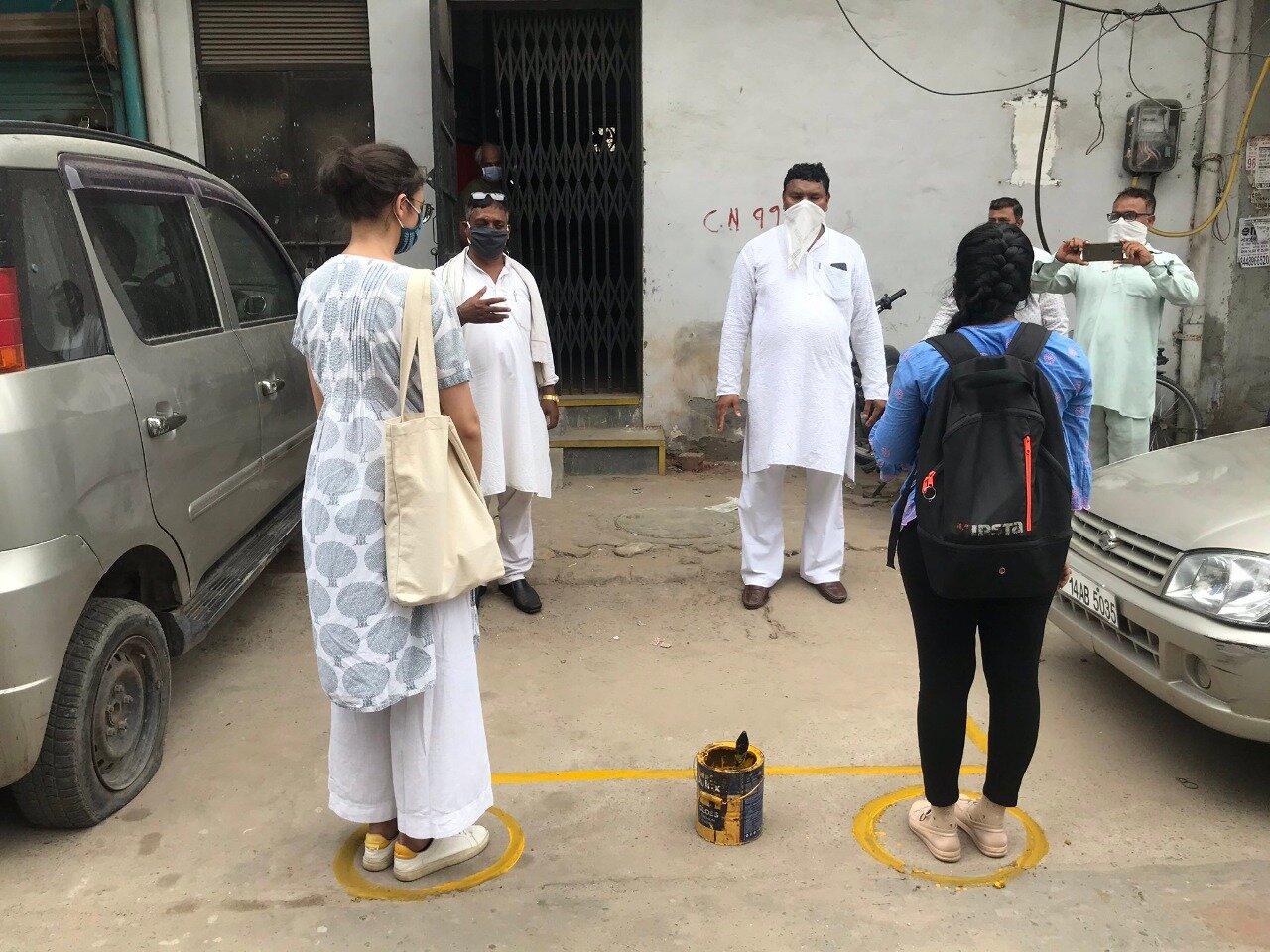
Mock runs to demonstrate vendor-consumer bubbles and ensuring safety when purchasing
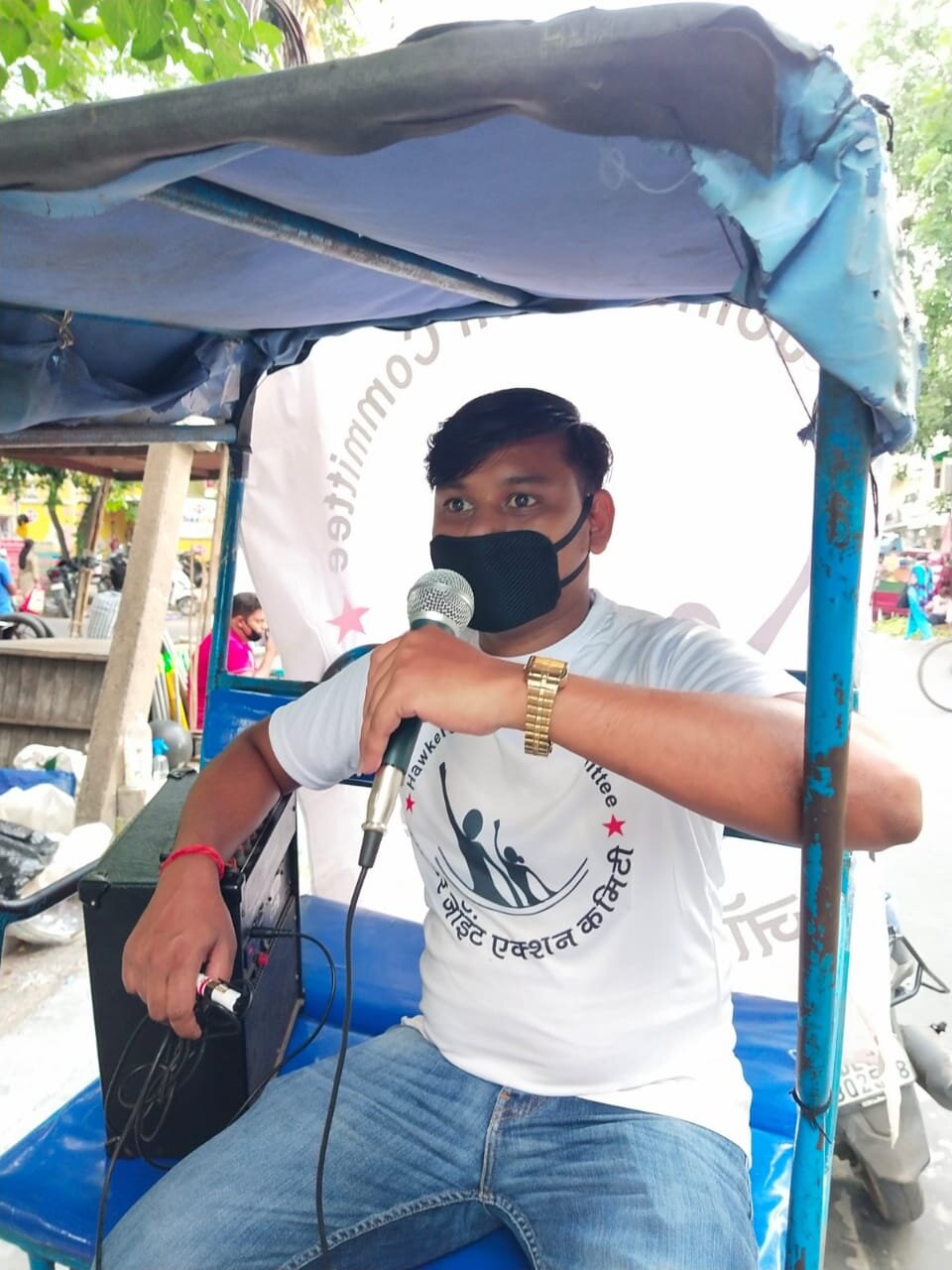
Timely mobile health and safety announcements led by the volunteers at HawkersJAC and Janpahal
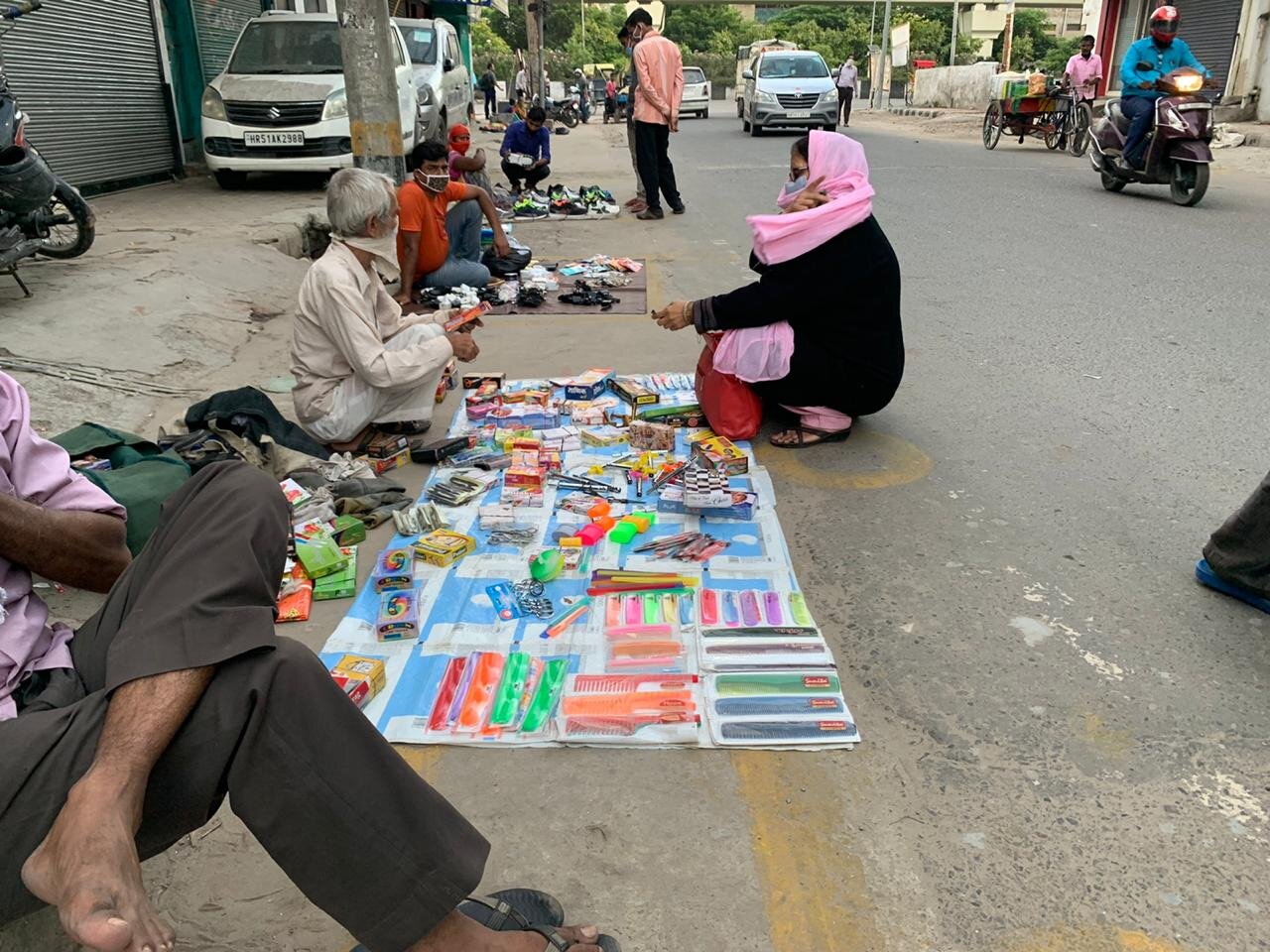
A weekly market scene at Dilshad Garden with social distancing demarcations on the street
Som Bazaar
Ramlila Maidan, Jhilmil Colony (East Delhi Zone)
The second weekly market site in Shahdara district of East Delhi Zone is situated in Jhilmil Colony, which is in close proximity to the previous Dilshad Garden weekly market. Due to its proximity, the vendors move from one market to the next on a day-to-day basis. Held in a maidan (open field), Som Bazaar (Monday Market) was not allowed to be opened for up to 9 months of harsh lockdowns, where the vendors suffered losses and the residents of Jhilmil Colony dealt with commuting to far off places for basic household essentials. This multipurpose maidan caters to it’s surrounding neighbourhoods through its multiple usages- from a playground and parking lot to a vibrant market place, it has been a place for everyone!
Left: Google image of Ramlila Maidan during pre-Covid days

The Ramlila ground at Jhilmil Colony when weekly markets were prohibited due to extended lockdowns
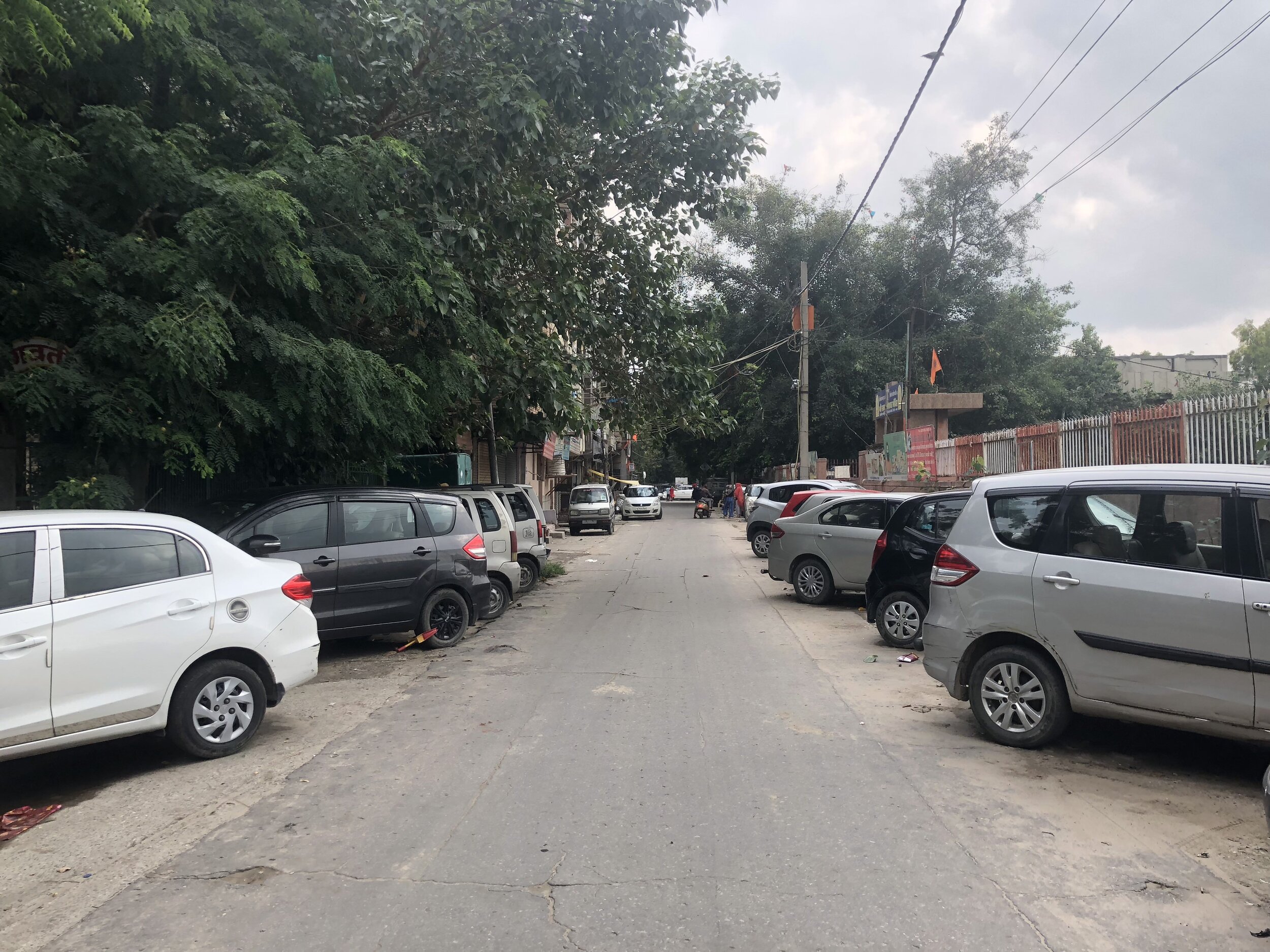
The streetscape outside Ramlila ground where weekly market stalls are a prominent feature. Instead, cars are parked due to the lack of vendors and vending stalls.

Photo Credits: Social Design Collaborative Ariel view of deploying and setting up of the weekly market
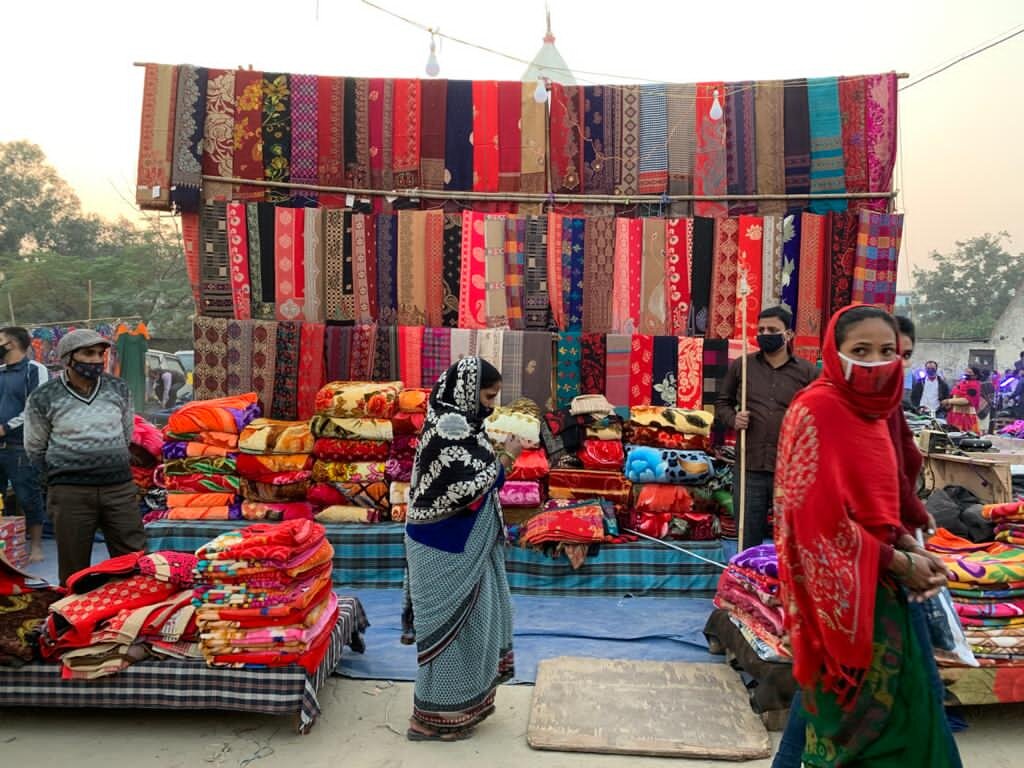
The post-pandemic weekly market at Jhilmil Colony Photo Credits: Social Design Collaborative

Setting up of stalls keeping social distancing in mind Photo Credits: Social Design Collaborative

The Ramlila ground still functions as a multipurpose ground even during peak rush hours of the weekly market Photo Credits: Social Design Collaborative
Learnings
In a post-pandemic world, to re-organise streets, streamline crowd movement, and effectively manage a transient public gathering, we started by co-creating simple tactical design strategies, as follows:
1. Stationing vendors at a 6ft distance from one another as well as from consumers via circle demarcations using chalk and situational mock runs
2. Re-imagining vendor-consumer bubbles where the effort is to make the exchange of goods contactless
3. Installing sanitation stations at all focal points and near social infrastructures closest to the vending street
4. Incorporating strong health and safety visual instructions through street signages for the users of the space
5. Conducting mobile announcements to encourage the wearing of masks and washing of hands
6. Designing, distributing and strategically placing social distancing and Covid-19 IEC material within the weekly market
As much as it is rooted in design and looked at from a solvability lens, 'place-making' as a concept is not possible without effective governance, the inclusion of ALL stakeholders concerned and embodying urban complexity for what it is.
The intervention process has seen a few successes and misses, but we've learnt that to create Covid-sensitive spaces, these socio-spatial interventions require a collaborative effort, with vendors, vendor unions, designers, residents, civil society and local administration working collectively.
Project Details
Location: Near Minto Road, New Delhi; Dilshad Garden, East Delhi Type: Ground Intervention Timeline: August 2020-Present Partners: SEWA Bharat, Hawkers Joint Action Committee, Janpahal, WIEGO India, Social Design Collaborative; with the Main Bhi Dilli Campaign Intersections: Participatory Design, Advocacy, Community Engagement, Place Governance, Covid-19 Post-Pandemic Response




